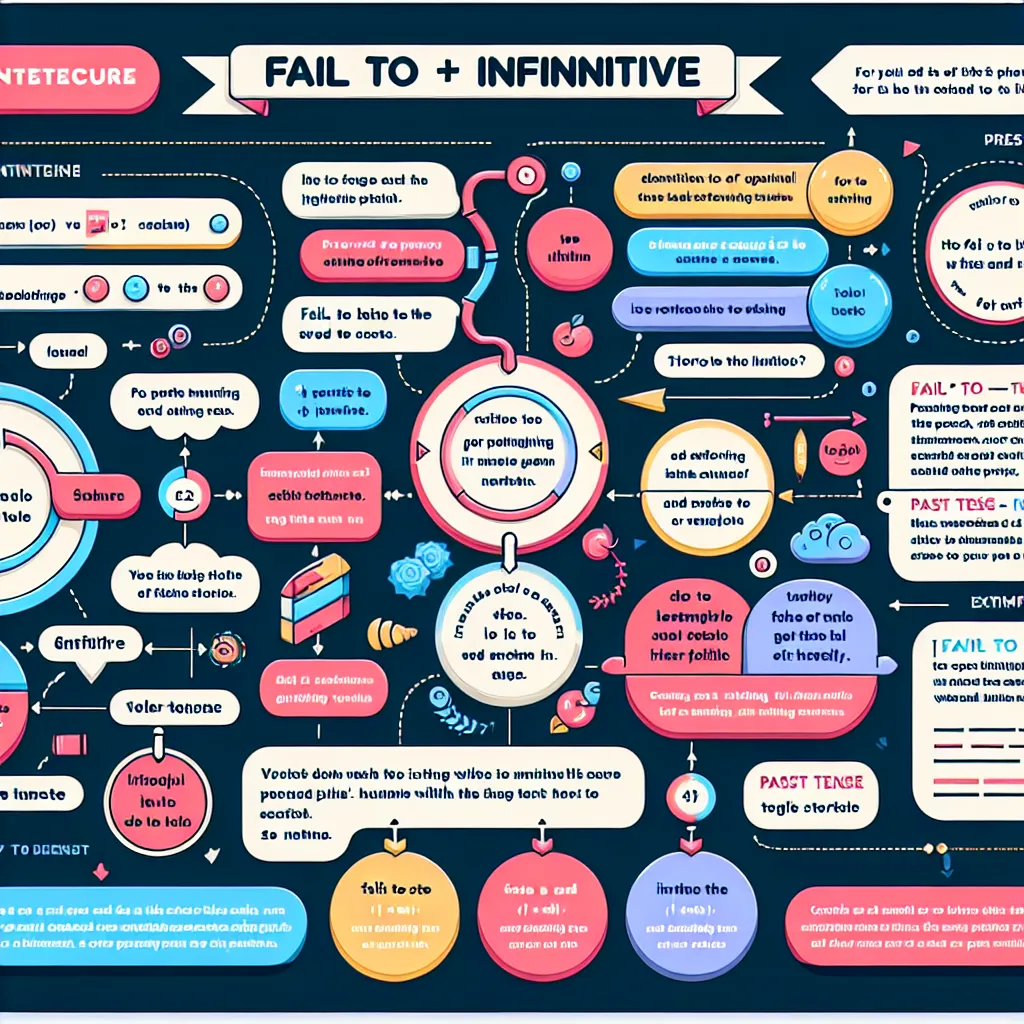The “fail to + infinitive” structure is a crucial grammatical pattern that frequently appears in IELTS exams. Understanding and effectively using this structure can significantly enhance your performance across all sections of the test. Let’s delve into its meaning, usage, and application in IELTS contexts.
Understanding the “Fail to + Infinitive” Structure
The “fail to + infinitive” structure is used to express the inability or neglect to perform an action. It’s a common way to describe when someone doesn’t succeed in doing something, either due to lack of ability, forgetfulness, or intentional omission.
Formula: Subject + fail(s)/failed + to + base form of verb
Examples:
- The government failed to address the rising unemployment rates.
- Many students fail to realize the importance of time management in IELTS preparation.
- The company failed to meet its annual revenue targets.
- Researchers often fail to consider all variables in their experiments.
- She failed to submit her assignment before the deadline.

Significance in IELTS
Understanding and using the “fail to + infinitive” structure correctly can help you:
- Express ideas more precisely in IELTS Writing and Speaking tasks
- Comprehend complex passages in IELTS Reading
- Grasp nuanced meanings in IELTS Listening
Let’s explore how to apply this structure effectively in different IELTS sections.
IELTS Writing
In IELTS Writing, using “fail to + infinitive” can add sophistication to your essays and reports. It’s particularly useful when discussing problems, criticizing policies, or explaining unsuccessful attempts.
Example for Task 2 essay:
“Many governments fail to invest sufficiently in renewable energy sources, which contributes to ongoing environmental degradation. Moreover, corporations often fail to recognize their role in climate change, failing to implement necessary changes in their production processes.”
IELTS Speaking
Incorporating this structure in your IELTS Speaking responses can demonstrate your grammatical range and accuracy.
Example for Part 3 question about education:
“In my opinion, the current education system fails to prepare students for real-world challenges. It often fails to develop critical thinking skills and fails to encourage creativity, focusing instead on rote memorization.”
IELTS Reading
Recognizing this structure in IELTS Reading passages can help you better understand the author’s point of view and identify key information.
Example from a potential IELTS Reading passage:
“Despite numerous attempts, scientists have consistently failed to replicate the results of the controversial experiment, casting doubt on its validity. This failure to reproduce the findings has led many in the scientific community to fail to accept the original conclusions.”
IELTS Listening
In IELTS Listening, being familiar with this structure can help you anticipate and correctly interpret information.
Example from a potential IELTS Listening dialogue:
Speaker A: “Why wasn’t the project completed on time?”
Speaker B: “Well, the team failed to anticipate the technical challenges involved, and we also failed to allocate sufficient resources from the beginning.”
Advanced Usage for Higher Band Scores
To achieve higher band scores in IELTS, consider these advanced applications of the “fail to + infinitive” structure:
-
Combine with other structures:
“By failing to address climate change now, we risk failing to secure a sustainable future for generations to come.” -
Use in complex sentences:
“Despite numerous warnings from experts, policymakers failed to implement necessary measures, which ultimately led to the economic crisis that we’re currently experiencing.” -
Incorporate into idiomatic expressions:
“The company’s new strategy failed to cut the mustard, resulting in significant financial losses.” -
Use with modifiers for emphasis:
“The government utterly failed to grasp the severity of the situation until it was too late.” -
Apply in different tenses:
- Present: “Many students fail to realize the importance of consistent practice.”
- Past: “The team had failed to prepare adequately for the competition.”
- Future: “If we don’t act now, we will fail to meet our climate goals.”
Common Mistakes to Avoid
-
Using gerund instead of infinitive:
Incorrect: “They failed going to the meeting.”
Correct: “They failed to go to the meeting.” -
Adding ‘in’ after ‘fail’:
Incorrect: “The project failed in to meet expectations.”
Correct: “The project failed to meet expectations.” -
Using passive voice incorrectly:
Incorrect: “The deadline was failed to be met by the team.”
Correct: “The team failed to meet the deadline.” -
Confusing ‘fail to’ with ‘fail in’:
Incorrect: “She failed in to complete her studies.”
Correct: “She failed to complete her studies.” or “She failed in her attempt to complete her studies.” -
Overusing the structure:
While it’s important to use this structure, overusing it can make your writing or speaking repetitive. Vary your language with synonyms like “didn’t manage to,” “was unsuccessful in,” or “neglected to.”
Conclusion
Mastering the “fail to + infinitive” structure is crucial for IELTS success. It allows you to express complex ideas about failure, negligence, or inability with precision and sophistication. Practice incorporating this structure into your writing and speaking, and be alert for it in reading and listening tasks. Remember to use it judiciously and in conjunction with a wide range of other grammatical structures to showcase your language proficiency in the IELTS exam.
For further practice, try using this structure in essays about government policies, environmental issues, or educational reforms – topics that frequently appear in IELTS Writing Task 2. In Speaking, prepare examples using this structure for topics like personal achievements, societal changes, or technological advancements. The more you practice, the more natural and effective your use of this structure will become in the IELTS test.